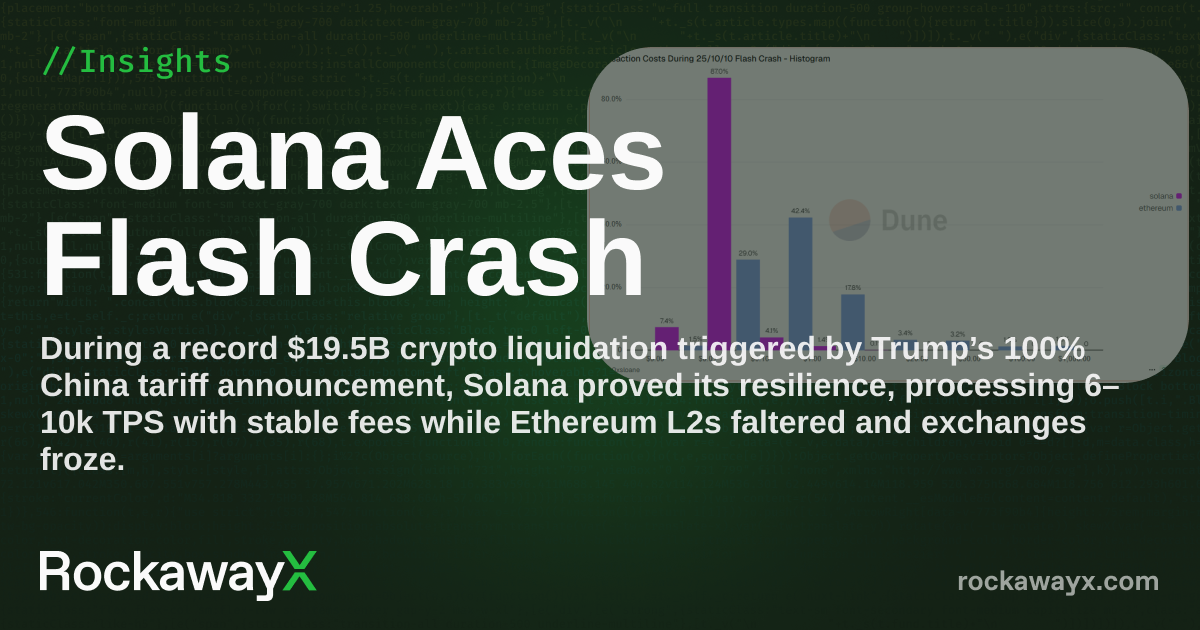
The cryptocurrency market endured a record-breaking liquidation event on Friday, October 10, as $19.5 billion in leveraged positions were liquidated within 24 hours, $1.7 billion of which were long SOL positions. Sparked by U.S. President Donald Trump’s surprise announcement of 100% tariffs on Chinese imports, the shock triggered a cascade of forced sales across global exchanges, briefly erasing nearly $1 trillion in crypto market capitalization and impacting over 1.6 million traders.
Leveraged long positions, thin liquidity in altcoins, and cascading automated liquidations created a feedback loop that drove prices lower. Bitcoin plunged from above $125,000 to below $113,000, while Ethereum, XRP, and Solana each suffered double-digit losses. SOL fell roughly 17.5% to $144 before rebounding near $183 by day’s end. And the complete impact of the losses is likely yet to be seen; post-FTX collapse, it took weeks for the full breadth to be remotely clear.
Beyond price action, the standout story was how Solana’s network infrastructure withstood the stress.
According to the Solana Foundation, the blockchain processed 6–10 thousand transactions per second (roughly 6x normal peak traffic), with block-producing validators ingesting around 100,000 transaction packets per second and sustaining 60 million compute units per block with no service degradation. Median transaction fees for users remained stable (rising only to $.007 from the typical range of $.0005-$.001) despite the record load, even as MEV-related fees briefly surged. This characteristic of Solana, where MEV fee spikes do not meaningfully generate higher fees for users, is in contrast to Ethereum and L2s, where MEV spikes lead to gas wars.
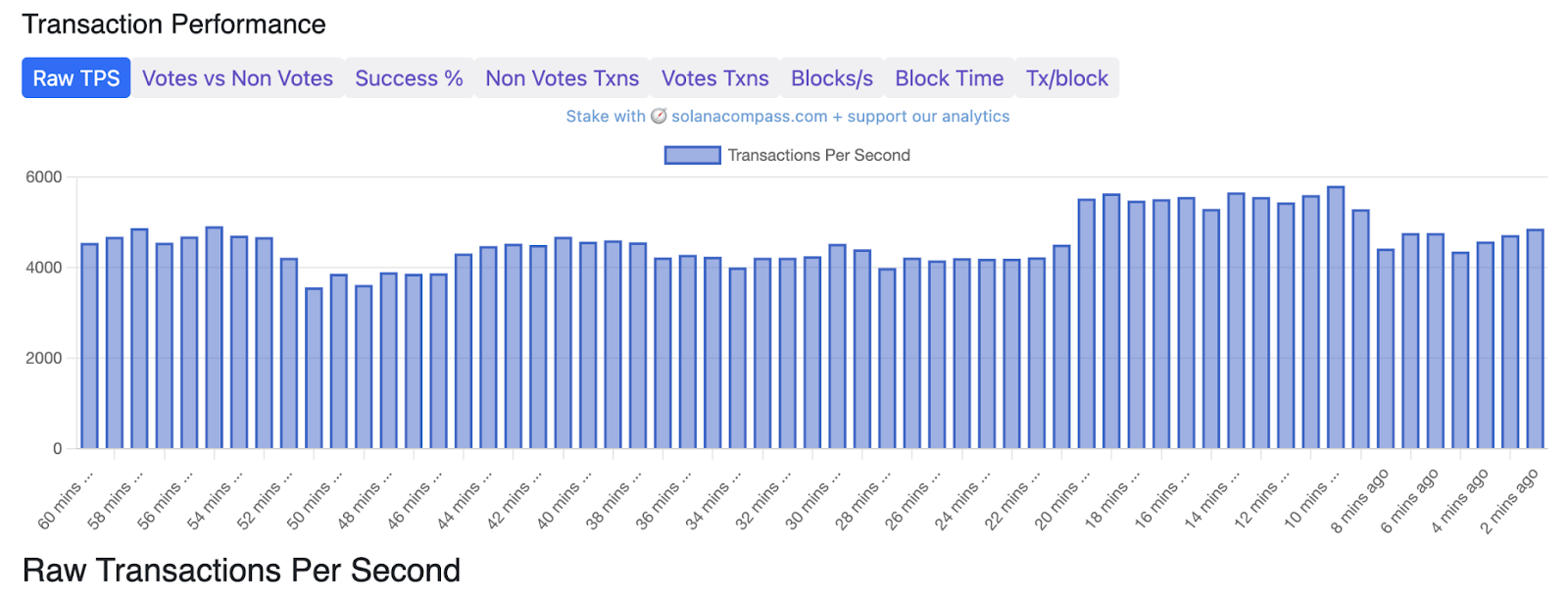
While Solana performed smoothly, several Ethereum L2s, including Arbitrum, reported latency issues, and major centralized exchanges like Binance temporarily halted trading as liquidity dried up. Although only briefly, Ethereum and Arbitrum’s medium fees spiked to $100 per transaction during the same period. Coinbase’s Base L2 median fees rose to over $3 at one point.
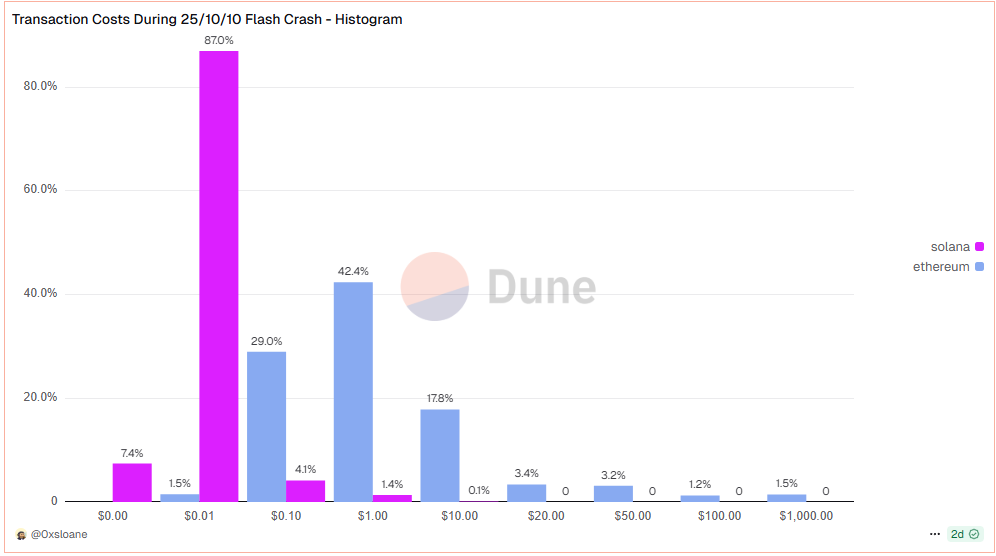

These networks lack Solana’s local fee markets, which isolate congestion to specific accounts rather than the entire network. On Solana, if too many users interact with the same program or token account, fees rise only for that hotspot, while unrelated activity continues unaffected. By contrast, networks like Ethereum and Base apply global fee adjustments, raising costs for all users during periods of high activity.
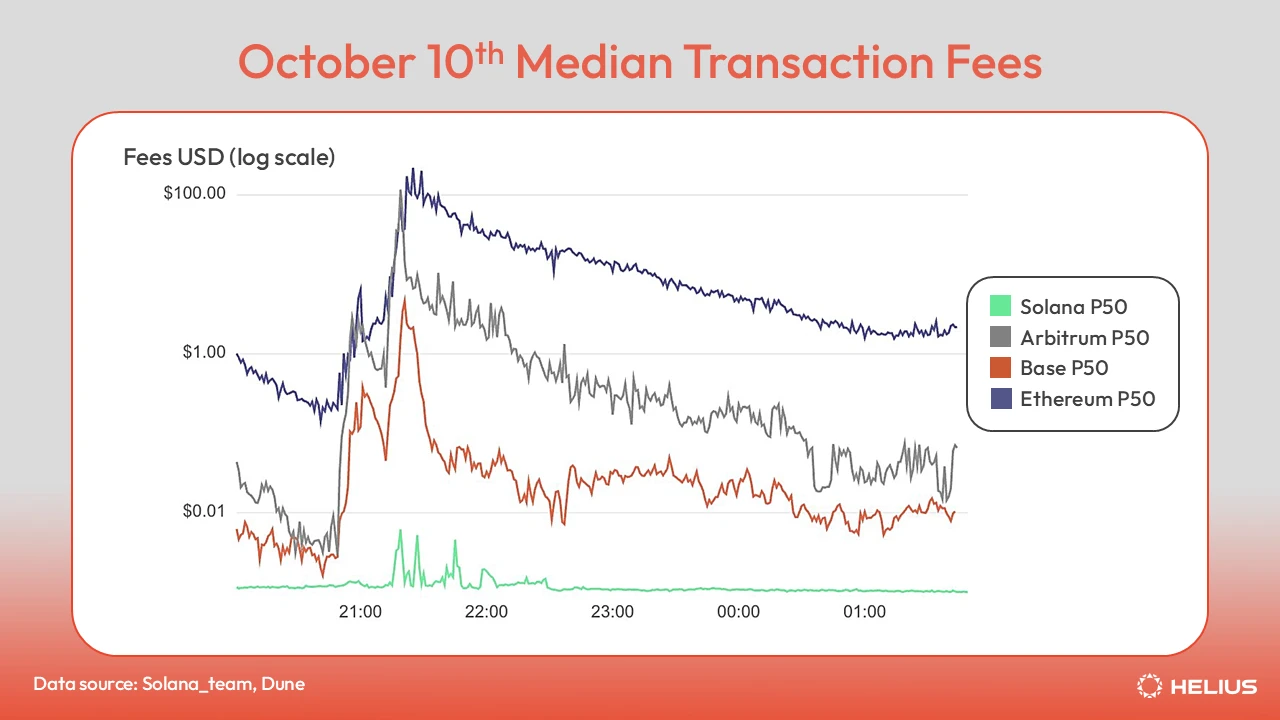
Data from DeFi trackers showed over $7 billion in 24-hour DEX volume on Solana (flipping Ethereum) during the sell-off while centralized venues struggled with order-book imbalances and pricing errors that drove some assets briefly to zero.
“Today was a resounding success for the Solana blockchain and a vindication of the idea that you don’t need a modular approach to scale,” said Max Resnick, Lead Economist at Anza, which maintains the Agave validator client. “If we’re grading on a curve, Solana gets an A++. Of all the chains, layer 2s and exchanges impacted by today's volatility, Solana performed by far the best.”
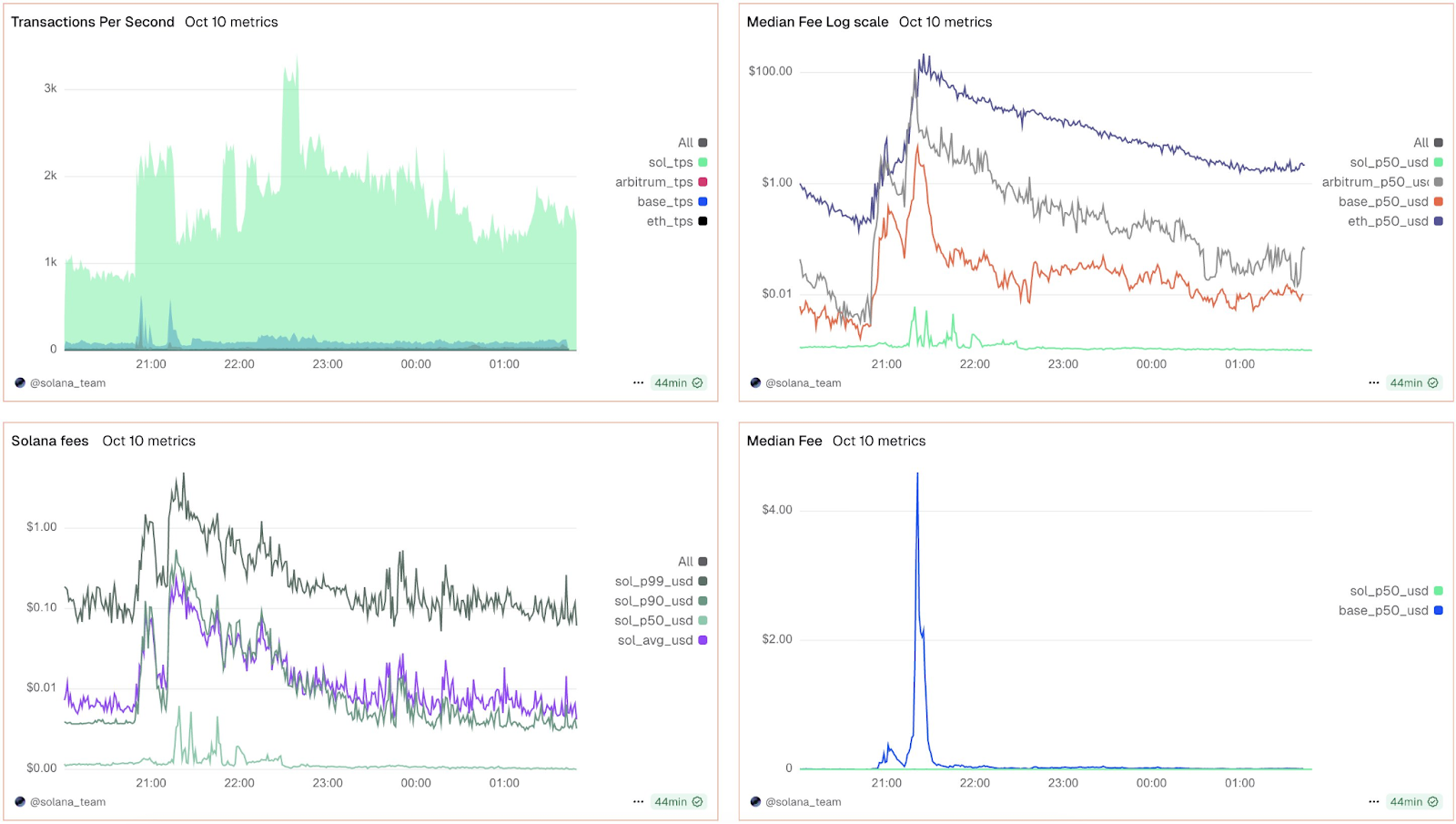
As volatility cooled heading into the weekend, Solana’s uninterrupted performance drew widespread praise from developers and market participants alike. The episode served as an unplanned but definitive proof-of-performance moment, showing that, even under historic market stress, Solana’s infrastructure held firm where others faltered.